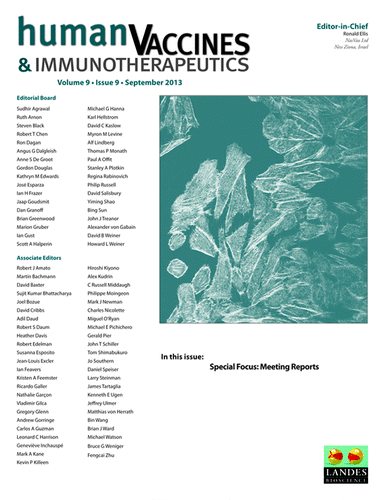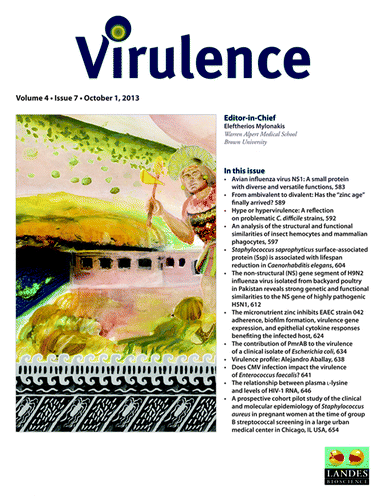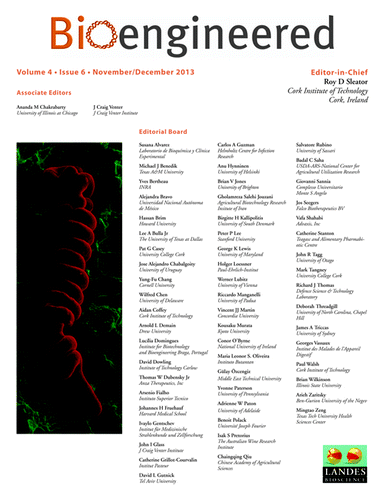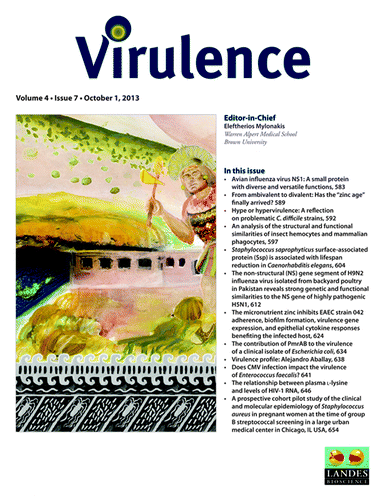Development of non-live vaccines against rotavirus
Rotavirus (RV) is the most important cause of severe gastroenteritis in children worldwide. Currently available live RV vaccines are efficacious but show lower efficacy in developing countries, as well as a low risk of intussusception. This has led to the development of parenteral non-live candidate vaccines against RV. RV capsid VP6 protein is highly conserved and the most abundant RV protein forming highly immunogenic oligomeric structures with multivalent antigen expression. Both recombinant VP6 (rVP6) or double-layered (dl) 2/6-virus-like particles (VLPs) might be considered as the simplest RV subunit vaccine candidates and were produced and tested in animals by Dr Vesna Blazevic and colleagues. The candidate vaccines were produced in insect cells using a baculovirus expression system, and formation of rVP6 tubules and VLPs were confirmed by electron microscopy. Intramuscular immunization of mice with either rVP6 or dl2/6-VLPs induced a balanced Th1-type and Th2-type response and high levels of serum IgG antibodies with cross-reactivity against different RV strains. In addition, mucosal VP6-specific IgG and IgA antibodies were detected in feces and vaginal washes of immunized animals. Immunization with either protein preparation induced a similar level of VP6-specific, interferon-γ secreting CD4+ T cells in response to different RVs or the 18-mer peptide (AA242–259), a VP6-specific CD4+ T cell epitope. Overall, the study showed that RV rVP6 and dl2/6-VLPs induced equally strong humoral and cellular responses against RV in mice and therefore may be considered as non-live vaccine candidates against RV ().Citation1
Role of zinc in the pathogenesis of enteroaggregative Escherichia coli
Enteroaggregative Escherichia coli (EAEC) is a major pathogen worldwide, associated with diarrheal disease in both children and adults, suggesting the need for new preventive and therapeutic treatments. A recent study by Dr Richard Guerrant and colleagues looked at the role of the micronutrient zinc in the pathogenesis of an E. coli strain associated with human disease. A variety of bacterial characteristics (growth in vitro, biofilm formation, adherence to epithelial cells, gene expression of putative EAEC virulence factors, and EAEC-induced cytokine expression by HCT-8 cells) were quantified. The authors found that at concentrations that did not alter EAEC growth (strain 042) but that are physiologic in serum, zinc markedly decreased the organism’s ability to form biofilm, adhere to IEC-6 epithelial cells and express putative EAEC virulence factors (aggR, aap, aatA and virK). After exposure of the organism to zinc, the effect on virulence factor generation was prolonged. Further, EAEC-induced IL-8 mRNA and protein secretion by HCT-8 epithelial cells were significantly reduced by 0.05 mM zinc. Using an in vivo murine model of diet-induced zinc-deficiency, oral zinc supplementation administered after EAEC challenge significantly abrogated growth shortfalls. Furthermore, stool shedding was reduced but tissue burden of organisms in the intestine was unchanged. The study findings suggest several potential mechanisms whereby physiological levels of zinc alter pathogenetic events in the bacterium (reducing biofilm formation, adherence to epithelium and virulence factor expression) as well as the bacterium’s effect on the epithelium (cytokine response to exposure to EAEC) to alter EAEC pathogenesis in vitro and in vivo. These effects may help explain and extend the benefits of zinc in childhood diarrhea and malnutrition ().Citation2
Bioengineered probiotics to control enteric infections
Enteric infections account for high morbidity and mortality and are considered to be the fifth leading cause of death at all ages worldwide. Seventy percent of all enteric infections are foodborne. Thus significant efforts have been directed toward the detection, control and prevention of foodborne diseases. Many antimicrobials including antibiotics have been used for their control and prevention. Probiotics offer a potential alternative intervention strategy owing to their general health beneficial properties and inhibitory effects against foodborne pathogens. However, antimicrobial probiotic action is often non-specific and non-discriminatory. In such cases, bioengineered probiotics expressing foreign gene products to achieve specific function could be a solution. A recent review by Drs Amalaradjou and Bhunia summarizes the strategic development of recombinant bioengineered probiotics to control enteric infections. They examine how scientific advancements in the human microbiome and its immunomodulatory effects help develop such novel and safe bioengineered probiotics ().Citation3
Problematic C. difficile strains
Clostridium difficile infections (CDI) have emerged as a major cause of healthcare associated disease, and recent epidemiological evidence also suggests an important role in community-acquired diarrhea. This increase is associated with specific types, especially PCR ribotypes 027 and 078, which are sometimes referred to as “hypervirulent”. Over the past few years, major advances have been made in our understanding of C. difficile pathogenicity, with the identification and characterization of the major clostridial toxins TcdA and TcdB. However, the relation between the toxins, their regulation, and “hypervirulence” remain unclear. In a recent review Dr Wiep Klaas Smits summarizes the current understanding of C. difficile pathogenicity. He argues that “hypervirulent” is an inadequate term to describe PCR ribotypes 027 and 078 and that no single factor (toxins, sporulation or resistance) is responsible for the increased virulence of epidemic strains, though at least one of the major clostridial toxins is required. The multifactorial nature of virulence makes it a fluid phenotype and it will be a challenge for the future to determine characteristics of C. difficile that affect its propensity to become epidemic. Until then, vigilance is in order toward all types that are closely related to ribotypes 027 and 078 but are currently not considered problematic ().Citation4
Reference
- Lappalainen S, Tamminen K, Vesikari T, Blazevic V. Comparative immunogenicity in mice of rotavirus VP6 tubular structures and virus-like particles. Hum Vaccin Immunother 2013; 9:1991 - 2001; http://dx.doi.org/10.4161/hv.25249; PMID: 23777748
Reference
- Medeiros P, Bolick DT, Roche JK, Noronha F, Pinheiro C, Kolling GL, Lima A, Guerrant RL. The micronutrient zinc inhibits EAEC strain 042 adherence, biofilm formation, virulence gene expression, and epithelial cytokine responses benefiting the infected host. Virulence 2013; 4:624 - 33; http://dx.doi.org/10.4161/viru.26120; PMID: 23958904
Reference
- Mary ARA, Bhunia AK. Bioengineered probiotics, a strategic approach to control enteric infections. Bioengineered 2013; 4 Forthcoming
Reference
- Smits WK. Hype or hypervirulence: A reflection on problematic C. difficile strains. Virulence 2013; 4:592 - 6; http://dx.doi.org/10.4161/viru.26297; PMID: 24060961



